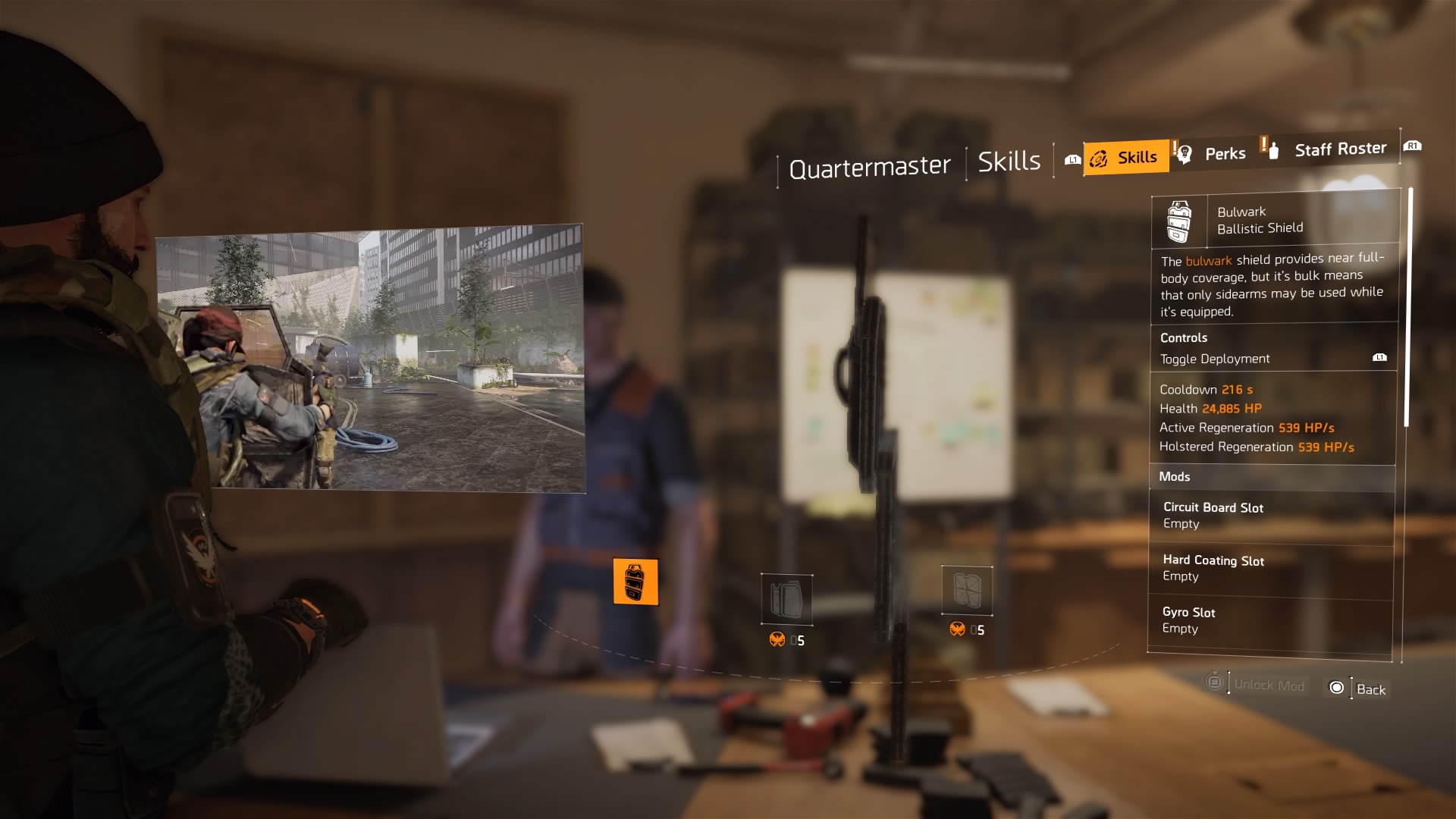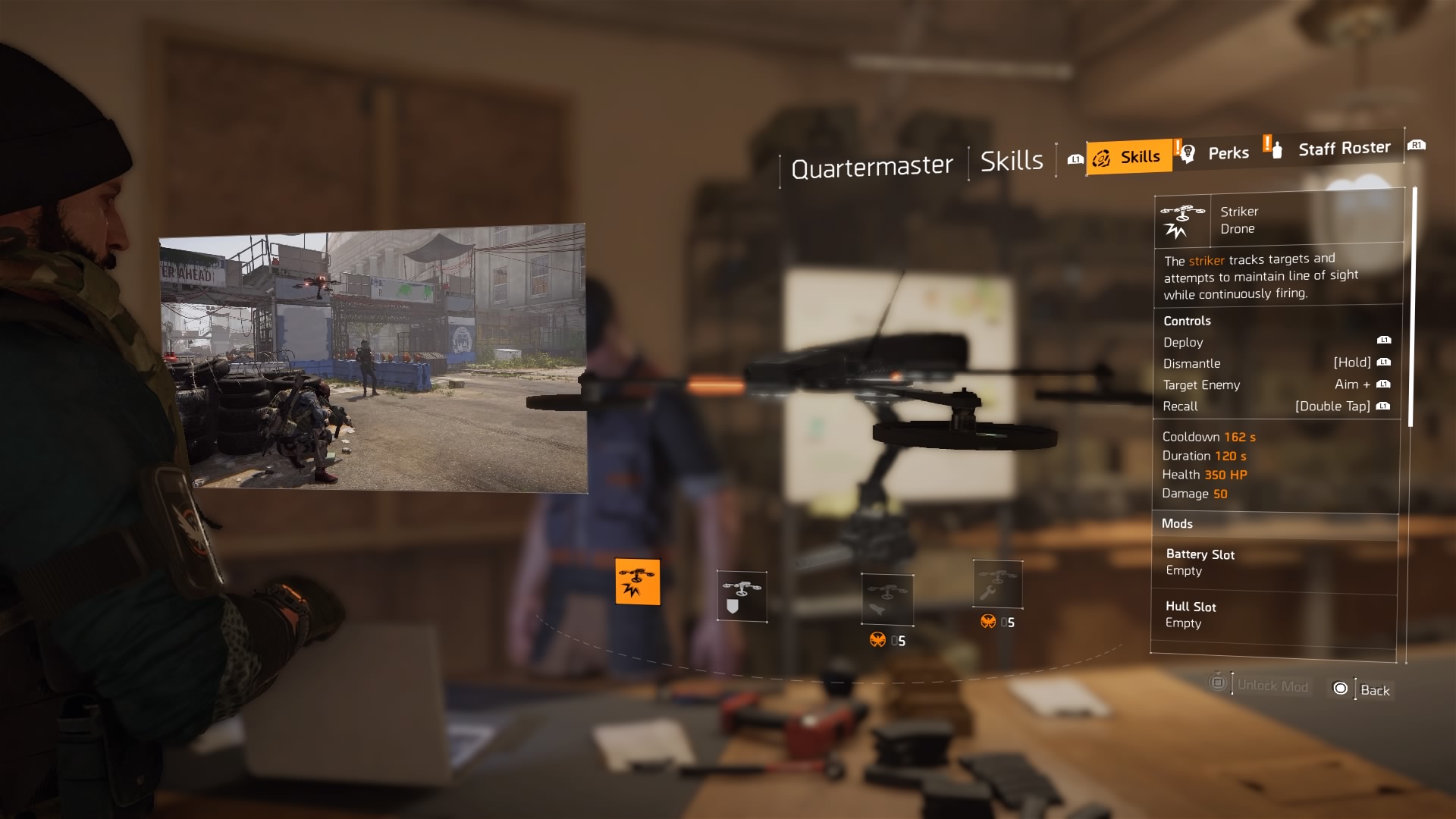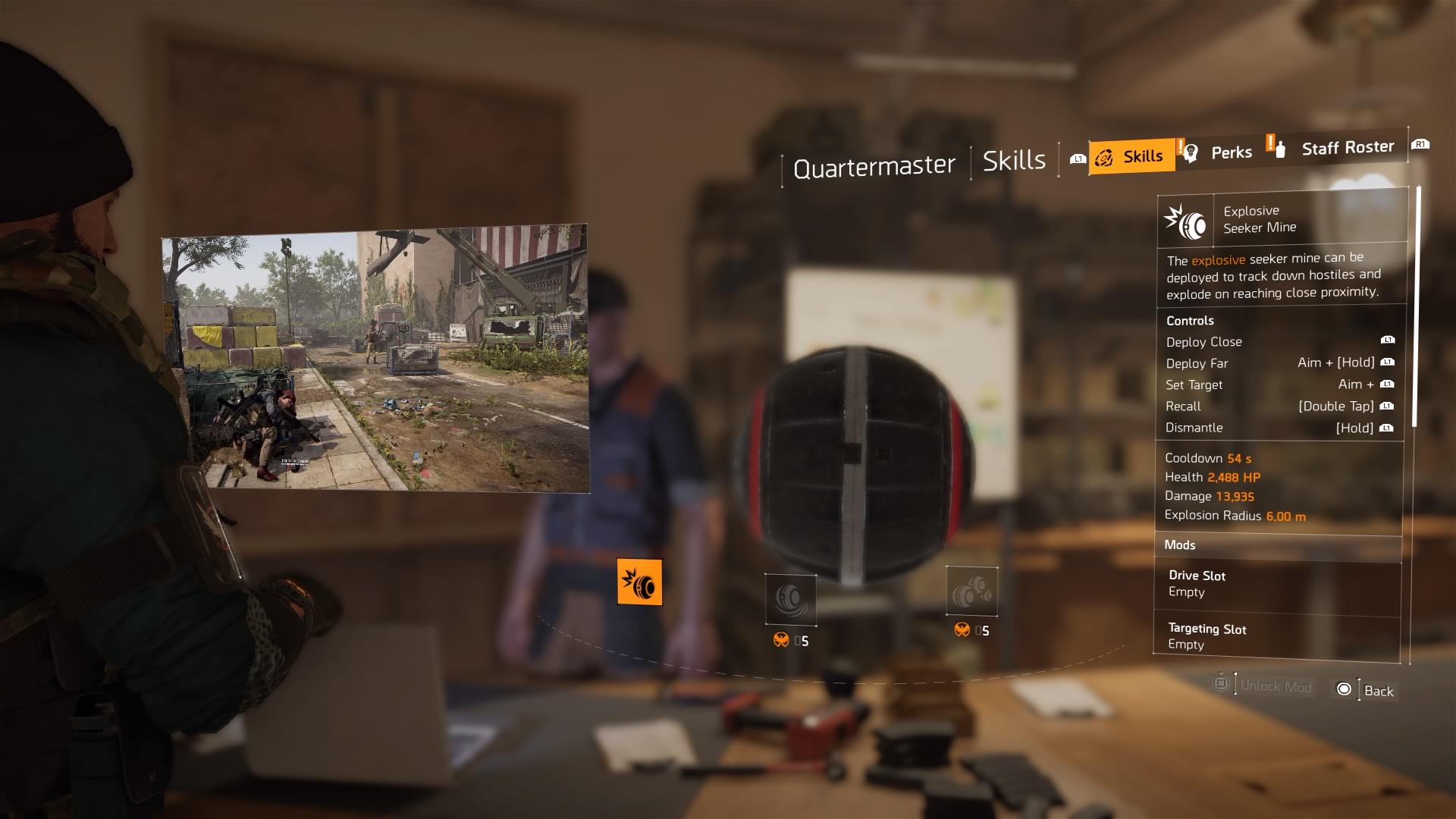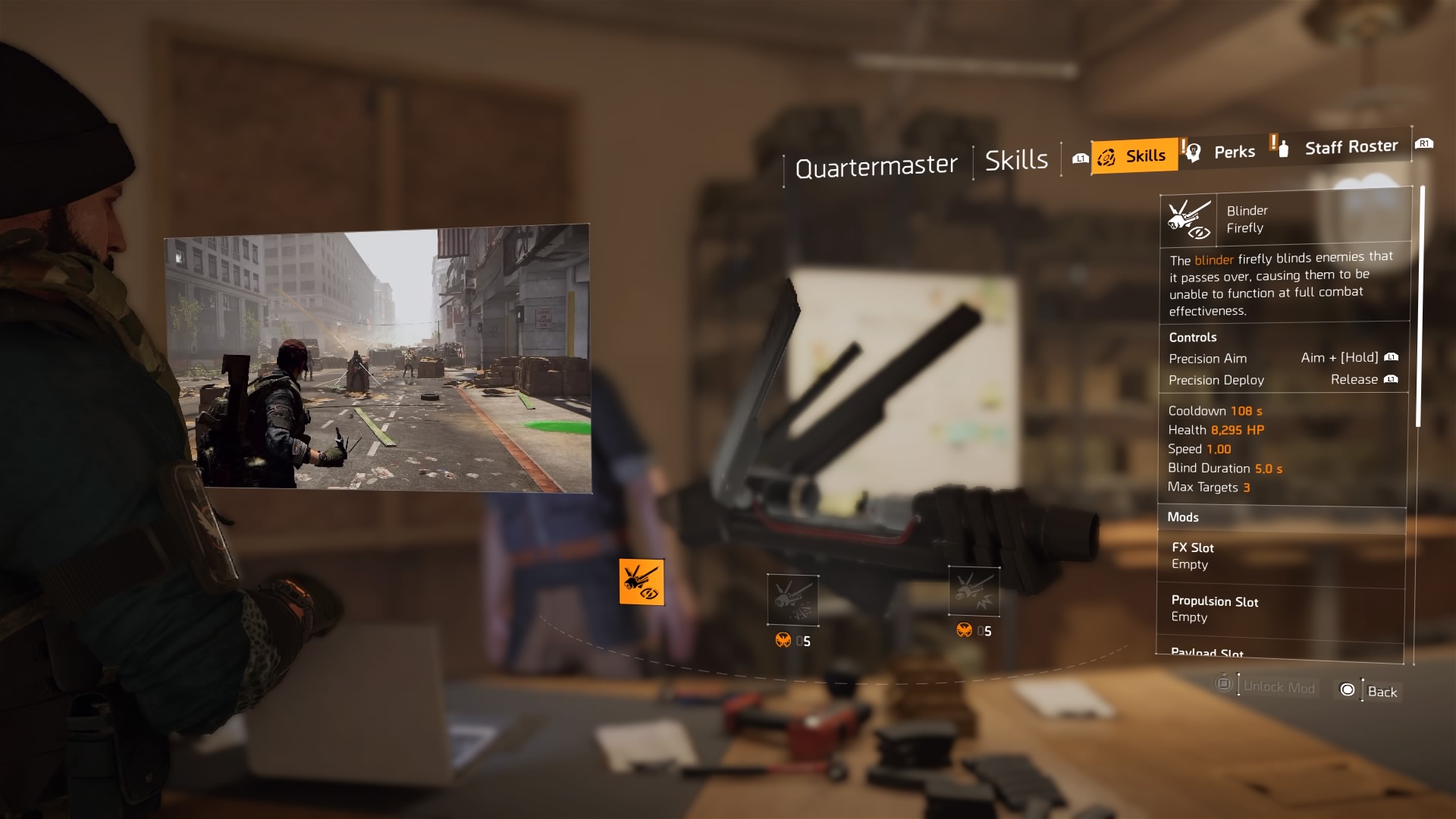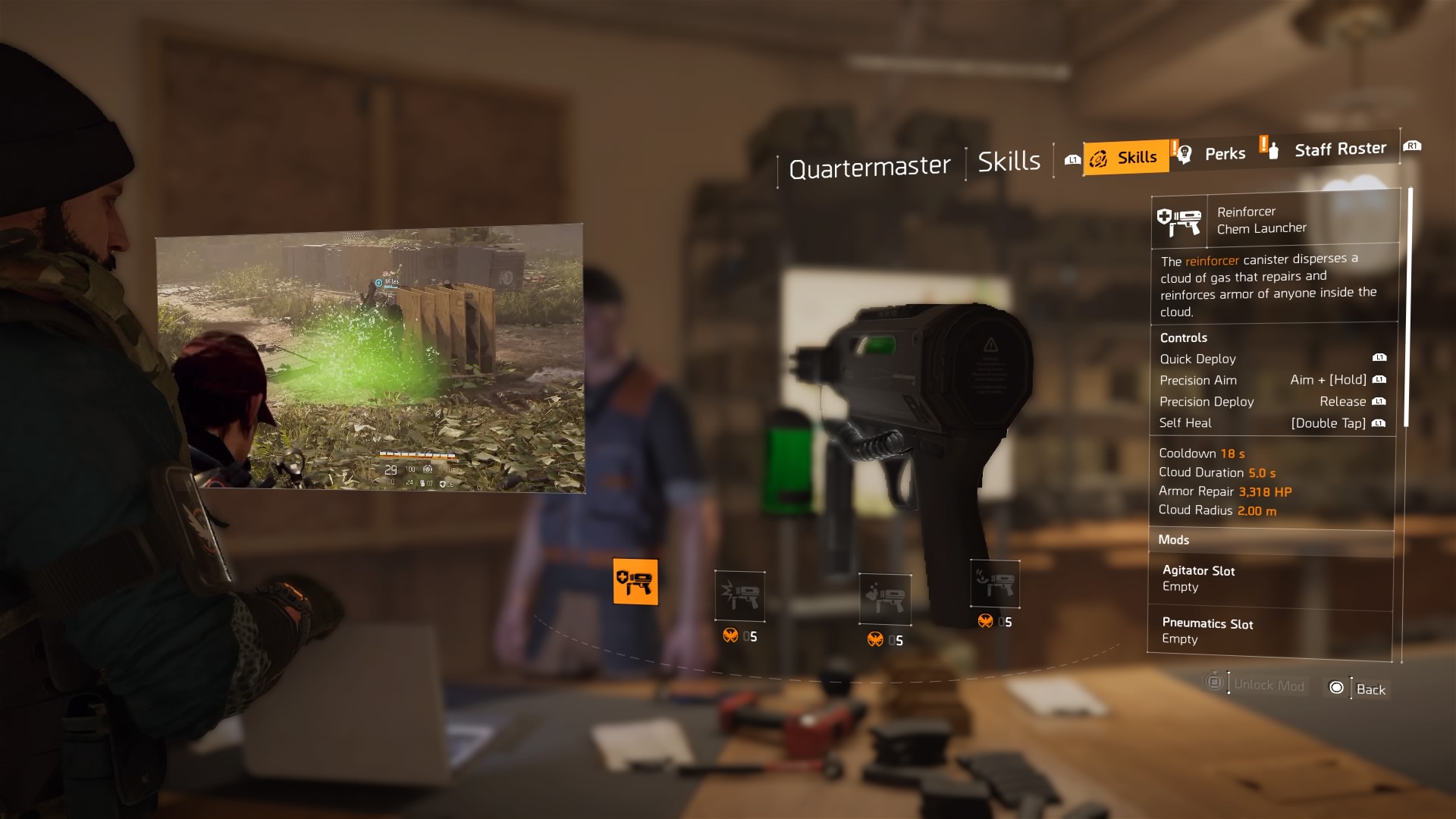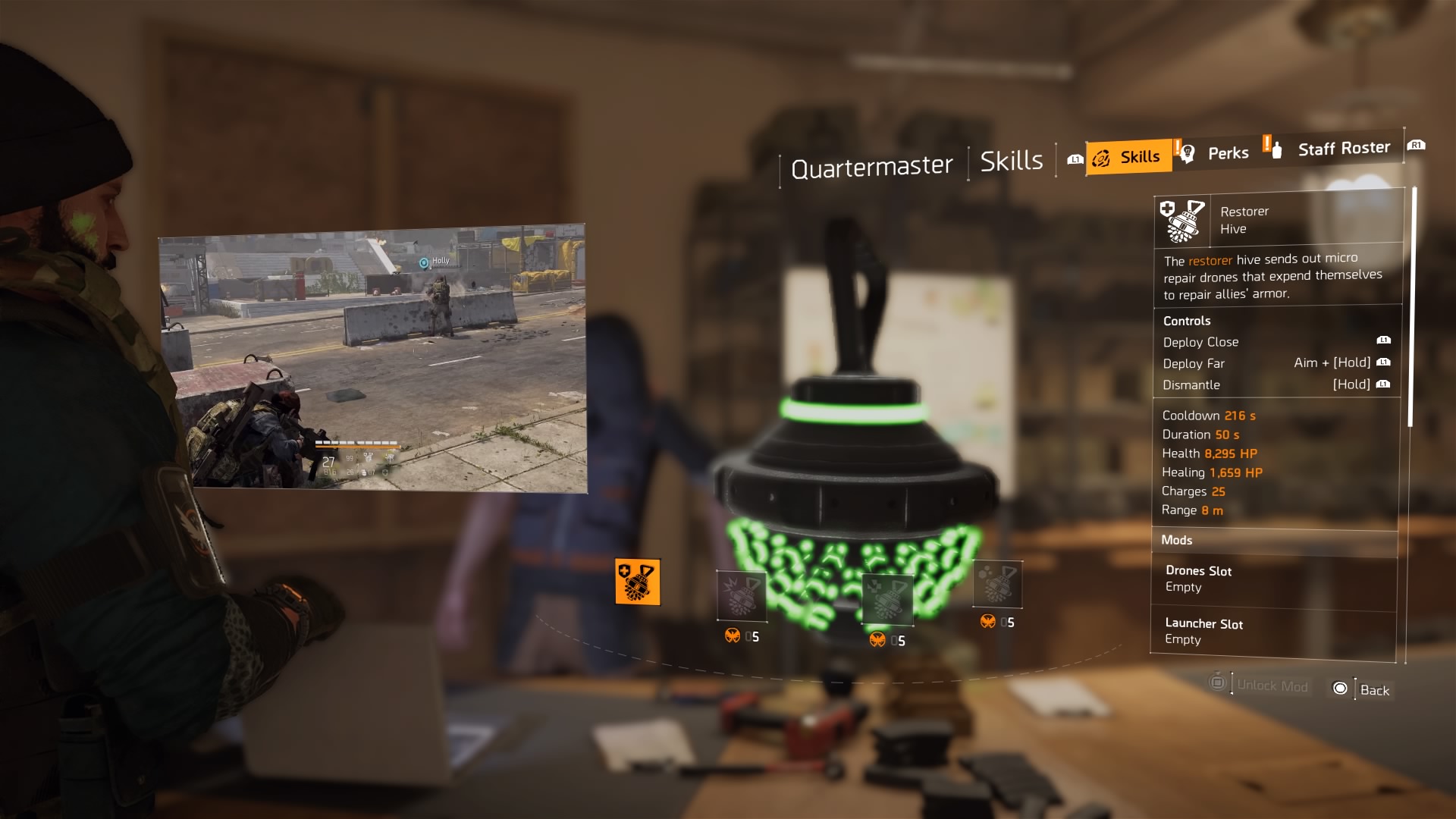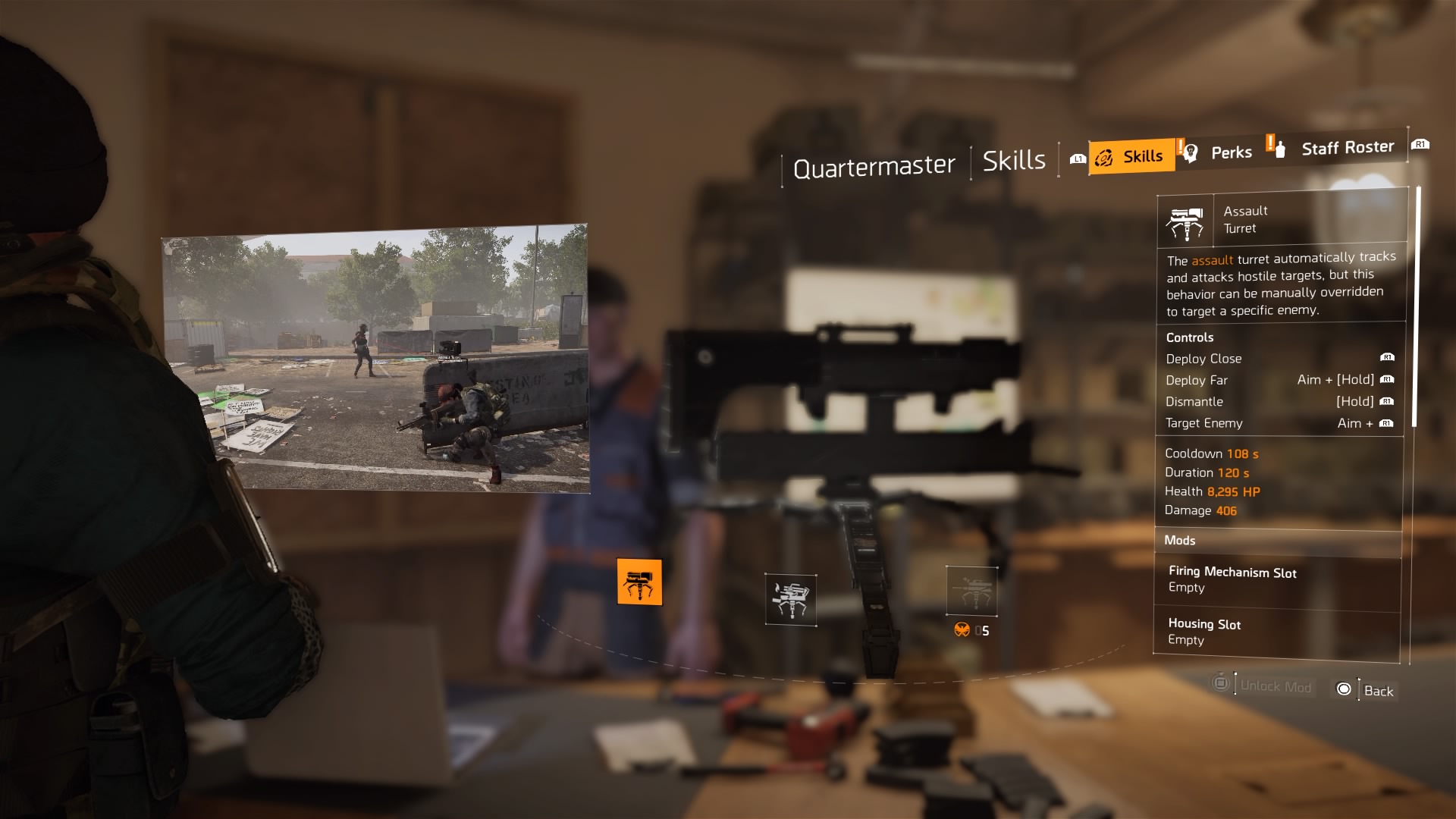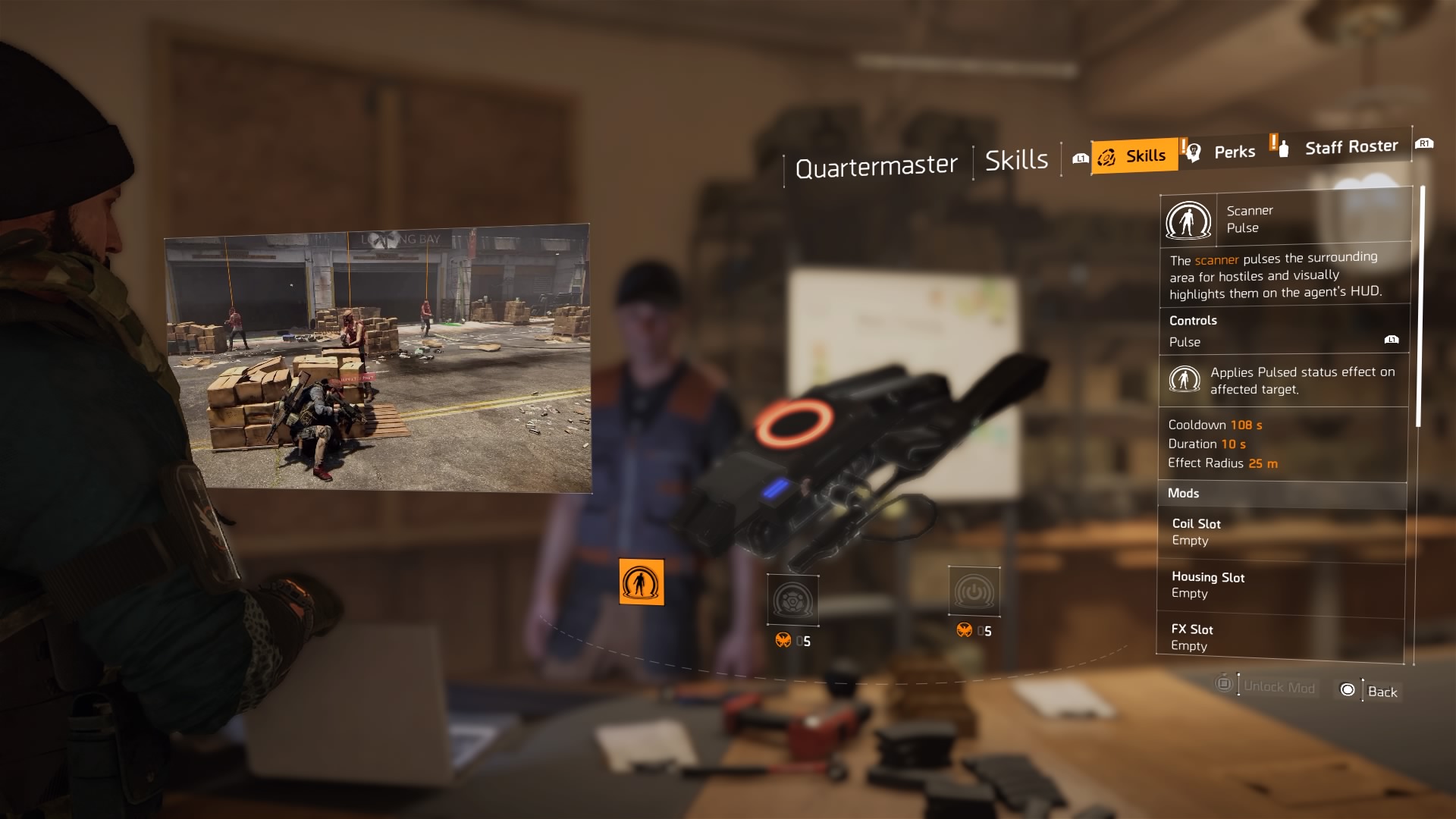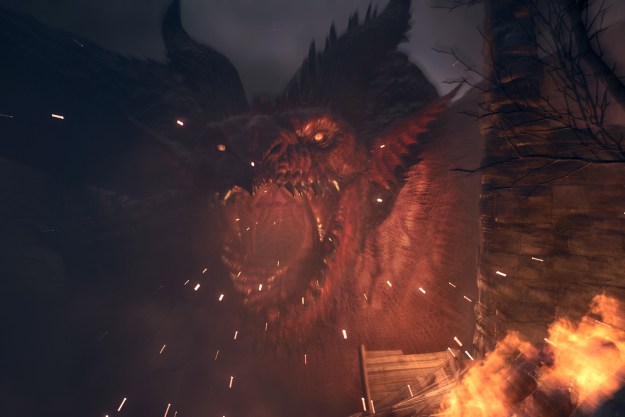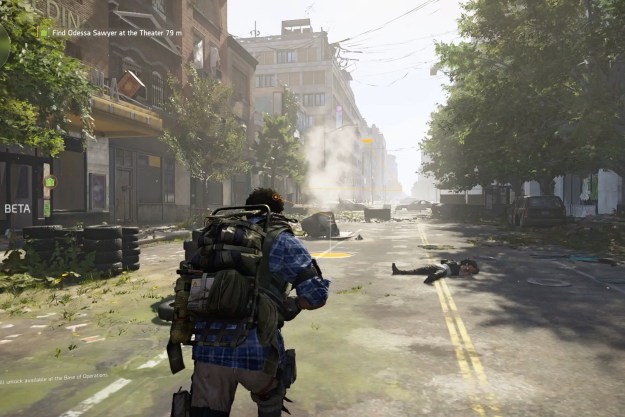
“The Division 2 builds on the strengths of its predecessor to deliver a thoroughly engaging loot shooter.”
- Story missions are incredible
- Finely tuned loot systems
- Engaging open world activities
- Varied, challenging enemies
- Excellent gunplay
- Bland story
- Allies are stupid
The Division 2 is good. In fact, it gets even better the longer you play. After spending 35 hours in the main campaign, and another 20 hours playing the endgame and exploring the Dark Zones, I can confidently say that The Division 2 is the best loot shooter I’ve ever played.
Each mainline mission stands out despite following the same core loop from the original. Diverse environments with different vantage points and hazards promote a wealth of strategies while helping to highlight the varied enemy design and excellent, improved gunplay. The vast, well-realized open world accompanied by a sublime loot system, features a wealth of differentiated weapons and gear.
All of these systems come together to further shine in the endgame. More fleshed out than its predecessor, the lengthy mission path winds up being even better than the already excellent campaign, and while the Dark Zones don’t feel like game changers at the moment, they are welcomely open to both hardcore and casual players.
The Division 2 is an addictive, highly rewarding experience. Bugs exist, but overall it’s a highly polished experience.
A museum of ideas
Most people play loot-driven games like The Division 2 for the endgame content. That’s understandable, as it features the best gear and the most difficult challenges. But I can still wholeheartedly recommend The Division 2 if you have zero interest in the endgame. That’s because Ubisoft has made the grind far more enjoyable and varied this time around.
Rather than placing each mission in nondescript buildings with no core identity, Ubisoft has made each level its own vibrant set piece completely unique to the rest of the game. In one mission, you explore the American History Museum, filled with interesting exhibits that we won’t spoil here. In another mission, you’re off to the Space Administration HQ before trekking over to the Lincoln Memorial to shoot baddies inside a museum dedicated to the monumental president.

Each of the story missions uses its environments to tweak the core gameplay loop just enough to get you to think on the fly. For example, in the aerospace museum, I entered a planetarium. Cool, right? But I initially didn’t have time to admire the constellations moving around the top of the darkened room. My enemies had taken position in a blown out opening in the dome above, and with the ceiling moving, their visibility and position constantly changed. Getting a good read on them required me to move strategically from my position below, all the while monitoring additional threats on my level.
The Division 2’s story mission areas may be beautiful to look at and explore, but before you can safely admire the sights you have to find cover
The story missions funnel into the overarching storyline about restoring order after a viral pandemic. Set seven months after the original, you’re up against three nefarious groups of baddies: Hyenas (not the animal), True Sons, and Outcasts.
Sadly, the main story isn’t much more interesting than the original, which means it’s rather boring. There are some neat developments and mission objectives that show the gravity of what’s at stake, but the story is fairly boilerplate. Emotional connections with characters you meet are virtually non-existent because you don’t interact with them on a consistent basis. On top of that, dialogue feels weirdly impersonal to the point where it’s sometimes hard to view characters as people rather than robots.
Find cover, quickly
The Division 2’s story missions may be beautiful to look at and explore, but before you can safely admire the sights, you have to find cover. Seriously, it’s a dangerous world. I remember being frustratingly bored at the Lincoln Memorial when my parents dragged me there at the ripe age of ten, but revisiting it in The Division 2 brought me a different type of frustration thanks to a particularly challenging boss fight.

Despite occasional frustrations, the challenge never feels unfair. You simply have to figure out the right strategy for the most punishing firefights. Typically that entails refraining from recklessness and planning ahead. The Division 2’s varied enemy design always keeps things interesting. There are more “weak” red bar enemies to contend with, which eliminates much of the sponginess seen in the original game. While these weak enemies are easy to takedown, they also pose a significant threat.
If you’re out of cover, they can decimate your shield in a matter of seconds. Additionally, there are different types you’ll have to watch out for. Some play the long game with sniper rifles, carefully staying behind cover. Others try to flank you with assault rifles. Meanwhile, the absolutely bonkers Hyenas run up on you with no regard for their own life, and sometimes, with ticking bombs attached to themselves, too.
Thanks to smarter AI design, enemies funneling into the area never feels routine.
The three factions of enemies have more elite, armored enemies. Blue tier baddies have hard-to-pierce shields, devastating weapons such as flamethrowers, and tech abilities that include creating radio controlled RC cars with bombs attached. Green tier enemies are hulking, brutish figures with extremely strong shields. They also can carry flamethrowers, deadly hatchets, and obscenely powerful machine guns.
The named boss enemies are represented with yellow health and shield bars. While they are easily the most formidable enemies in the game, they mainly feel like better versions of blue and yellow tier enemies. This fact is a bit disappointing, but the boss fights still delight.
In an underground bunker I squared off against three bosses in a row. The second boss had healing capabilities to revive his buddies. The third and final boss had a flamethrower with an unbelievably long range, made even more potent by the fact that portions of the floor were grated, allowing the flames to spread even quicker.
In another boss fight, the build up towards the fight was the tensest part. A sledgehammer-carrying boss smacked at a thick, translucent door trying to get in. I could see fissures forming in the glass as I continued to pick off red and blue enemies. I grew anxious, worrying that he would break through before I had a chance to eliminate all of the other threats. When the glass finally shattered, I practically jumped out of my chair.
That’s the best part about The Division 2’s battles. The waves of enemies funneling into the area carries over from the original, but thanks to smarter AI design, it never feels routine. Sadly, the smart AI design does not extend to your allies. During missions where you have to protect people, they do erratic things like run directly up to enemies. They’re basically asking for death. It’s annoying, but thankfully these sorts of objectives are rare.
Ubisoft really went all out with stat details on weapons and gear in The Division 2.
The cover shooting mechanics are more satisfying than the original as well, simply because guns seem more realistic when it comes to recoil, sound, weight, and accuracy. At first, I mainly used an automatic assault rifle paired with a standard single shot rifle. Eventually, though, the varied enemy design forced me to experiment with different loadouts.
For about 15 hours, I believed using a shotgun simply didn’t fit with the gameplay loop. Then I met the flamethrower boss and that changed my mind in a hurry. Now that I’ve made it through most of the story, I realize there’s a use case for all of the weapon types, and this has led me to creating multiple loadouts that I can swap between.
I’ve had a great time experimenting with the eight agent skills — tech-oriented helpers like drones, turrets, portable shields, and chemical launchers. I remember using the skills in the original, but I don’t remember them being this vital. Deciding where to place a turret or when to roll out a seeker mine is often a crucial moment in tense firefights.
Plundering the D.C. streets…again
The Division 2’s open world activities and endgame content feeds into the core goal of creating the best agent possible. Both side missions and open activities such as Control Points — territory capture events —kept me engaged not only because of the tough, tactical combat, but for the loot I knew I could secure to better my build. Open world activities further contribute to Project goals, which help you acquire blueprints for crafting and experience points.

After the main story wraps, the real hunt for loot begins with the endgame. A new faction called the Black Tusks takes over portions of the map and brings about ten challenging missions. Though these missions take place in the same settings as previous mainline missions, I never felt bored. Small changes to objectives helped, but the main reason the endgame mission line remains great is because of the Black Tusks themselves.
The smartest faction in the game, the Black Tusks make great use of flanking techniques and technology. They have robot dogs called Warhounds that look straight out of Boston Dynamics’ lab. These mechanical pups can put you down quickly and are heavily armored. Other Black Tusk forces create multiple drones that latch onto your position and blow up when close. The endgame is appropriately more challenging, which makes the rewards even sweeter.
The Division 2 is the best loot shooter I’ve ever played.
With each endgame stronghold you clear, you advance to the next World Tier where you have access to more powerful loot. The end goal, at the moment, is to hit a 500 Gear Score. Just to put that in perspective, you enter the endgame with a Gear Score of half or less than half of that.
I haven’t hit 500 yet, but after 55 hours I’m still excited when I find a new piece of High-End gear. Both armor and weapons have unique designs that only get cooler the further you advance. Guns have distinctive flourishes you can readily notice while aiming down the sight, and armor, particularly backpacks, always look appropriately important and lavish.
Ubisoft really went all out with stat details on weapons and gear. Each piece of gear is graded and color coded, from worn to standard to specialized to superior to high end to exotic. The higher you get on the scale, the more stat bonuses and quirks they tend to have. Weapon descriptions list not just basic stuff like damage and RPM, but drop-off damage by distance as well.
You can test weapons for efficiency at the firing range to get really granular with your gear choices. Armor stats are influenced further by brand sets that reward stat bonuses for weapons, skills, health, and more. Creating your most formidable build sometimes takes some creative thinking, but it’s always a joy to mix and match gear to find what works best. If you’re the type of player who loves seeing how each piece of gear affects your build, The Division 2 has perhaps an excess of information at your disposal.
The Dark Zones add even more avenues for finding new loot and improving on your buildout. The three hybrid PvE/PvP zones are where the game is likely to grow the most over time. As of now, you can try your hand at clearing landmarks of powerful enemies and delivering contaminated gear back to safety alongside friends.
Unlike the first game, you have the option whether or not to open yourself up for PvP confrontations in two of the Dark Zones. The Occupied Dark Zone, on the other hand, doesn’t normalize your gear stats and friendly fire is on. This cutthroat zone rewards those with the best build and tactics. At this point, the Dark Zones are somewhat lacking in direction and the environments aren’t as interesting as the main map, but everything extra is gravy after 50-plus hours of fun.
Microtransactions
The Division 2 does have microtransactions and everything you can buy with real money is purely cosmetic. You can exchange cash for Premium Credits to buy weapon skins, emotes, outfits, and apparel caches (loot boxes) with random items of clothing for your Division agent. You can uncover these sorts of cosmetics without spending real money, just not as quickly.
The cosmetics vary in price based on rarity, with lower tier items costing around a buck and higher tier skins and apparel pieces for closer to five dollars. That’s quite pricey for a cosmetic, but we did find rare cosmetics on the streets without buying.
Our Take
The Division 2 is the best loot shooter I’ve ever played. The cover shooting mechanics are refined, enemy AI is smart and punishing, and the mission design is varied and surprising. Ubisoft has created a wondrously detailed post-apocalyptic Washington D.C. that compels you to keep scouring for loot. The story flounders, but the activities soar all the way through the lengthy story and engaging endgame. The Dark Zones don’t feel as consequential as the main map at the moment, but they still offer additional fun.
Is there a better alternative?
No, The Division 2 is the best at what it does, delivering a loot driven, open world experience that succeeds both in its early hours and endgame. That’s a rare quality.
How long will it last?
It took me 35 hours to complete the campaign. I’ve spent an additional 20 hours with the endgame and Dark Zone content. I plan on playing for many more hours.
Should you buy it?
Yes, if you like third person shooters, buy The Division 2.
20 minutes of The Division 2 gameplay
Editors' Recommendations
- The best Power Armor in Fallout 4 and where to find each set
- Hades 2: release date prediction, trailers, gameplay, and more
- The best Fallout 4 mods
- PlayStation Portal 2: 8 features we want in Sony’s next-gen handheld
- Smite 2 Founder’s Editions available now, closed alpha coming in May






